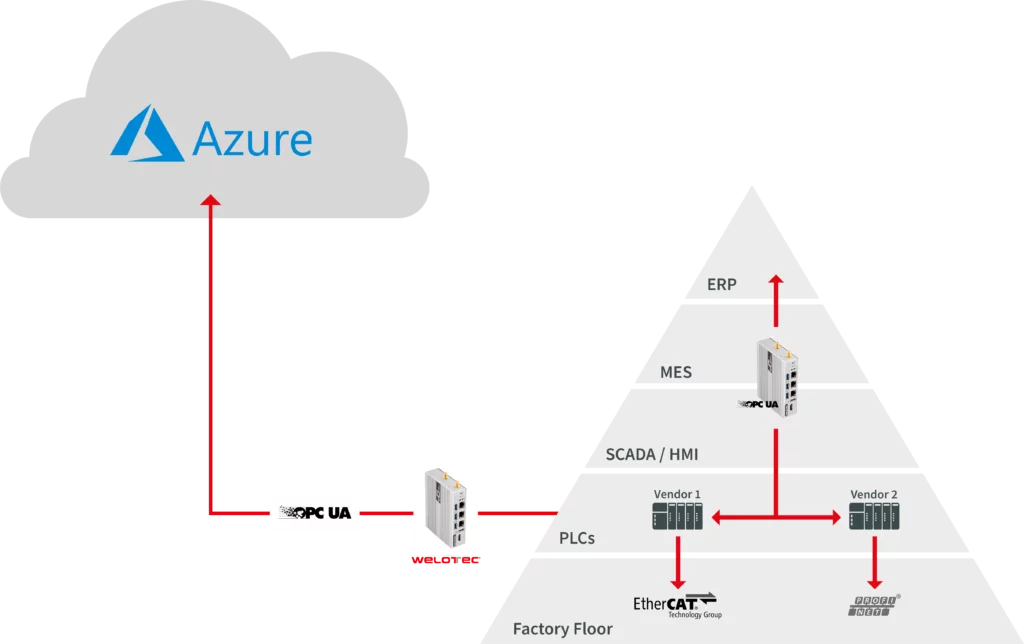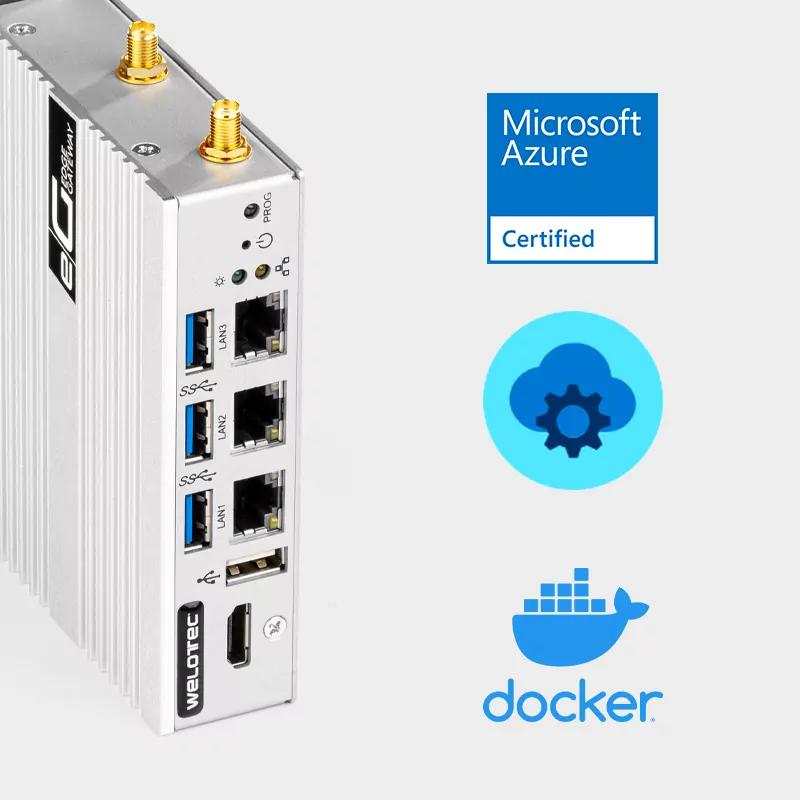Definition, functions and chances of OPC UA
What is OPC UA?
OPC stands for “Open Platform Communications” and is a data exchange standard for industrial communication. UA stands for “Unified Architecture” and describes the possibility of using the communication standard platform-independently on the basis of different operating systems.
This open interface standard is independent of the manufacturer or system provider of the application, of the programming language in which the respective software was programmed, and, as already mentioned, of the operating system on which the application runs. OPC UA is thus one of the most important communication protocols for Industrie 4.0 and the IIoT (Industrial Internet of Things).
How does OPC UA work?
Server / Client architecture
The server / client architecture is the traditional communication model in OPC UA. It is based on the idea that there is a passive server component that provides data to other applications that act as clients in the process. The client applications can access data and information from the server via a few standardized services.
The server / client model also includes a subscriber model. In this mechanism, each client can create any number of subscriptions to the server. Through these subscriptions, a client can read data when the server has published a notification.
Publish / Subscribe mechanism.
With the 2019 specification, the OPC Foundation has added additional functionality of a publish / subscribe architecture (PubSub model). Due to the characteristics of IIoT systems and with reference to real-time capability and scalability, the communication standard needed to be improved in this area. The PubSub model is fundamentally different from the server/client model, but in the OPC UA context there are similarities. In the PubSub model, there is a Publisher component that defines datasets that contain variables or notifiers. The publisher then publishes a message that contains data changes or notifications. These messages are published to a network where subscribers can listen to them and filter out what they need.
This model is scalable because, in theory, there can be any number of publishers and any number of subscribers. They are all connected to the same network, but not to each other, which is the main improvement over the server/client model.
Advantages and disadvantages of the communication standard
Disadvantages of OPC UA
Currently, there are still some machines and systems in the field that do not have a native OPC UA implementation. For such systems, it is recommended to upgrade them with additional hardware using a retrofit approach. This allows data to be queried via existing protocols of the plants and machines, such as Modbus RTU. The data is then adapted and can be made available to other network participants and cloud systems in the form of an OPC UA server. This allows old as well as new systems to be connected to each other without much effort and to exchange data via an OPC UA interface. The industrial routers of the TK600 series, as well as the Welotec edge gateways of the 500 and 600 series offer these functions for the acquisition of data and for the conversion, as well as the provision of data in the form of an OPC UA interface.
Advantages of OPC UA
With its standardized communication, OPC UA offers the possibility to share data not only on a horizontal but also on a vertical level. Particularly with regard to data exchange in the vertical direction, a standardized communication option between IT and OT is an essential approach for Industrie 4.0.
On a horizontal level, this means that OPC UA enables machines and systems to exchange data securely with each other via a uniform interface. This communication is completely independent of the manufacturer of the control system or PLC that was installed.
Viewed vertically, OPC UA creates the possibility of providing data from the lowest layer for higher levels such as MES or ERP. In addition, a combination of OPC UA and MQTT makes it possible to forward recorded and preprocessed data directly to a cloud system such as Microsoft Azure. This provides the option of exchanging and using data at all levels of an existing company structure.
Opportunities through OPC UA in the context of Industrie 4.0
Even though OPC UA was defined long before the concept of Industrie 4.0, it is considered one of the leading communication protocols for the implementation of IIoT projects.
A common language is needed for the intelligent networking of factories and machines. The communication protocol can provide exactly that and thus forms an important tool for the realization of Industrie 4.0. For the implementation of a large number of projects in the field of Industrie 4.0, the OPC UA client / server model can be used to communicate “synchronously” in a typical SCADA scenario. The “PubSub” model enables even better scalability and improves communication performance, making it a good candidate for real-time communication and highly recommended especially for the implementation of IIot projects.


